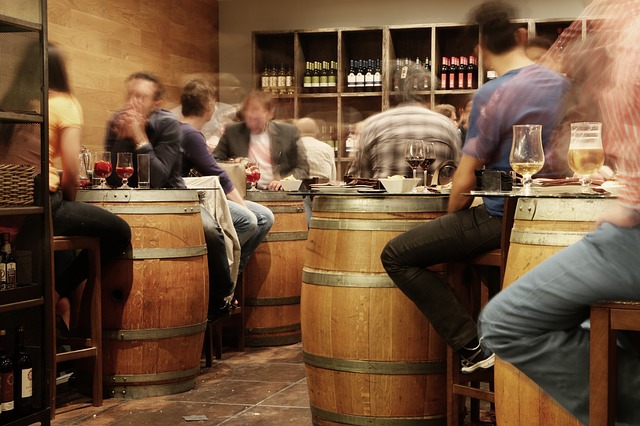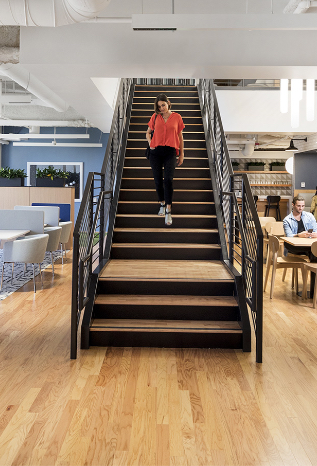When we think about social clubs, the first image that may come to mind is that of an older gentleman, wearing a suit, paired with a monocle, smoking a thick cigar and talking to other men in a room filled with wooden furniture. This cliche is engraved in our minds for a good reason, as the first gentlemen clubs in the UK were established in the 18th century, and spaces were only allowed for men, and those of the highest class, and financial means.
White’s Club in Piccadilly, for instance, which was established in 1693, had dukes and barons for its members. The place is still running with members such as Prince Charles and Prince William. This and other clubs around London provided a place for powerful men to socialise, network and build up their careers and reputations by meeting other influential men. While many either closed down or relaxed their rules to allow women and people from different backgrounds, some still remain highly exclusive to this day.
For the common millennial who is looking for an additional push to their career, something that will help them get ahead, joining a gentlemen’s club is not a viable option. A lot of millennials don’t have the financial means to even think of such a membership.
According to research from the Federal Reserve Bank of St. Louise, Americans born between 1981 and 1996 have a net wealth which is 34% below what they would have, had they not gone through the financial crisis. This crisis, of course, affected young people all across the western world. If we add to that the fact that young professionals are also looking for environments that are much more diverse and inclusive to all opinions, ethnicities, social status and genders, the old-fashioned social clubs just don’t provide that platform. So what does?
Working and networking at the same time
In the past few years, coworking spaces have become almost synonymous with the young workforce. Predictions state that by 2020, millennials will make up about 35% of the global workforce, with Gen Z making up 24%. These workers are filling the growing rate of coworking spaces worldwide, which sprung from only five in 2005 to almost 19,000 in 2018, as young professionals try to stir away from the traditional office setting of 9 to 5 and look for flexible work hours and benefits. Coworking spaces do just that, by offering a more casual and relaxed work environment, with open spaces and a “come and go as you please“ attitude. But those spaces are not just about hip decor, relaxation areas and free food and drink.
The main attraction of coworking is one which the traditional social clubs offers, networking. But the setting is an even better one, during work hours. The basics that lie behind the idea of coworking are collaborative spaces, much like one in Soho, London, where teams from different companies sit side by side. They are no longer isolated in their own private bubbles and can brainstorm, share ideas, learn from each other and grow. They don’t even need to get up from their desk in order to meet potential new clients, mentors, business partners, investors and so on.
But if they do leave their desk, they even increase their chances of making new connections. Most coworking spaces also organise networking events on a regular basis, as well as courses, lecture days, and myriad of events that can help a person further their career, in both education and connections. Young professionals can get advice about their business plans, bounce ideas for their products, get impartial feedback about their marketing, all within one singular space.
Dry January all year long
Outside of the gentlemen clubs, another traditional place to network and straighten your connections is the pub. It’s a place for people to feel more relaxed, as they are out of the office, but is still close enough so they can continue talking “shop“ with ease.
According to a study from the Office of National Statistics, teetotalism is on the rise, with 21% of English residents claiming to not drink at all, and almost 50% drink less than they previously did. The coworking space is the perfect escape for people who want to connect with their colleagues, but hate the pressure of having to drink in order to do so.
Many coworking spaces offer their members (as a part of their membership) free beers on a Friday afternoon. This opportunity makes networking a lot more relaxed for both drinking and non-drinking people. You can feel free to either grab a beer or a coffee and just hang around. No need to buy rounds and spend Saturday in bed with a hangover.
A safe place for women
In 2016, The Wing, a coworking space in New York, was the first in the world to announce that it was limiting its membership to women only. This was done just a week before Donald Trump was elected president (unknowingly), but very much in tune with the #MeToo movement, and the aim of providing a safe haven for women. The CEO states that the idea for this space came from the movement which was opposed to the gentlemen’s club – the women’s club movement. This started in the 19th century in the US, by pioneering women, who wished to provide a supportive community for each other.
After The Wing’s success, many other places started popping up around the world, some in London, providing women with a place to network and expand their social circle. The purpose of the female-only space is to make women feel freer to speak up and dominate the conversations, without the fear of being dismissed, discriminated upon, and harassed, even though some found that discriminatory towards men. Theses spaces wish to encourage equality by giving women opportunities they may not find in a mixed office.
A new wave of coworking spaces
The line between social clubs and coworking spaces is becoming more blurry with every passing. Apparently, the exclusive members club in London, 12 Hay Hill, has decided to replace comfortable leather sofas and provide office areas instead. And many other clubs are following suit, trying to become a second office for their members, with wifi access and a boardroom.
Coworking spaces are taking the opposite route. Some are adding libraries, private rooms and lounges, and are becoming more exclusive by requiring members to submit an application, pay higher membership fees, and sometimes be from a certain background in order to get in.
Outside of the women-only coworking networks, you can find spaces that are aimed at LGBTQ community, such as Yass in San Francisco, or ones that are more neighbourhood-specific, like Canopy (also in San Francisco).
Other coworking spaces are focused on specific verticals, such as Edspace, in Hackney, London, which houses ventures related to innovation in education. Or Impact Hub Birmingham, which is only open to companies dedicated to social impact. All of these are focused on creating a common ground between their members, which will make it easier for them to grow their network and connect.
The office as the base for growing
The sad truth is that millennials are working hard and long hours. A survey taken by the Allianz Travel Insurance Vacation Confidence Index has determined that 48% of millennials haven’t used the full amount of their paid time off, and 53% didn’t take a vacation in 2017. With spending so much time in the office, they need everything to be focused in the same place – work, networking and socialising, as young professionals don’t have a lot of time to dedicate to life outside of the office.
Fortunately, coworking spaces, like the one in Liverpool Street, London offer them the opportunity to do just that. Focus on their work for most of the day, with the opportunity to have a chat with the person sitting at the desk next to them, or the new person hot desking every week across the hall over coffee. This new style of networking is not only important for their career advancement, but also contributes to their social life, and makes sure that even if they spend many hours in the office, they don’t lose that human connection.





